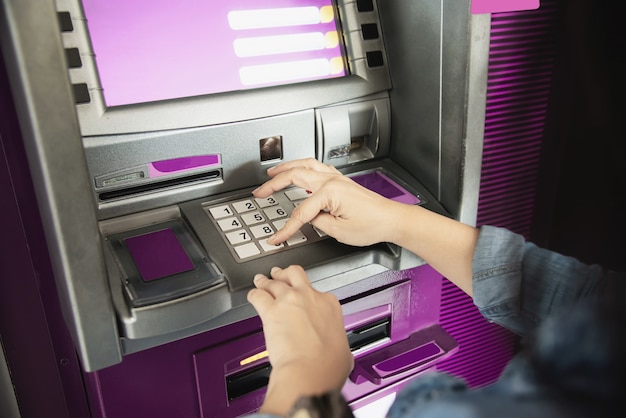As a Finance Expert: Four Situations to Avoid Using an ATM

For those who were accustomed to visiting their banks in person to withdraw or deposit money, ATMs seemed like a miracle. They offer the convenience of accessing cash on the go, making it easy to avoid long waits at the bank or grab some extra money for a night out. Nowadays, most people take ATMs for granted.
However, there are times when you should think twice before using an ATM. While some situations are obvious, like visible signs of tampering, there are other factors to consider. To help you make the safest decisions when using ATMs, GOBankingRates consulted personal finance writer Naomi Strong and Todd Stearn, founder and CEO of the Money Manual.
**When You Need to Perform a More Complex Transaction**
ATMs are great for quick tasks like withdrawals and balance inquiries, but Strong advises against assuming they can handle everything. She points out that most ATMs don’t support more complex transactions like depositing checks or transferring funds between accounts. For these tasks, it’s better to visit a bank branch or use online banking services. Additionally, ATMs often have withdrawal limits that might not meet your needs for larger transactions. Using an isolated ATM for large withdrawals can also compromise your security. It’s safer to go to a bank branch where you can access higher withdrawal limits and benefit from better security measures.
**Avoiding Extra Fees**
One common complaint about ATMs is the extra fees charged when using machines not affiliated with your bank. Stearn highlights that ATM fees have reached an all-time high of $4.73. If you withdraw money several times a month, these fees can add up quickly. Knowing which ATMs are in-network for your bank can save you from wasting money on these fees.
**Concerns About Safety**
It’s generally advised to avoid ATMs in poorly lit or unsafe areas. Stearn adds that if you see someone loitering near an ATM, it might be best to find another way to access your money. Besides the risk of robbery, scammers might try to “help” you with a malfunctioning ATM to steal your confidential information, like your PIN. Always ensure your transaction is complete and the ATM has returned to its home screen before walking away to prevent someone from accessing your account after you leave.
**Protecting Yourself From Scammers**
Scammers have become more sophisticated, using devices like skimmers to steal card information. Stearn suggests a few basic precautions to protect your information. Look for anything unusual near the keypad that could hide a camera and check the card slot for any signs of tampering. Also, never carry your PIN with you and shield the PIN pad with your hand while typing.
By being aware of these factors, you can make safer and more informed decisions when using ATMs.